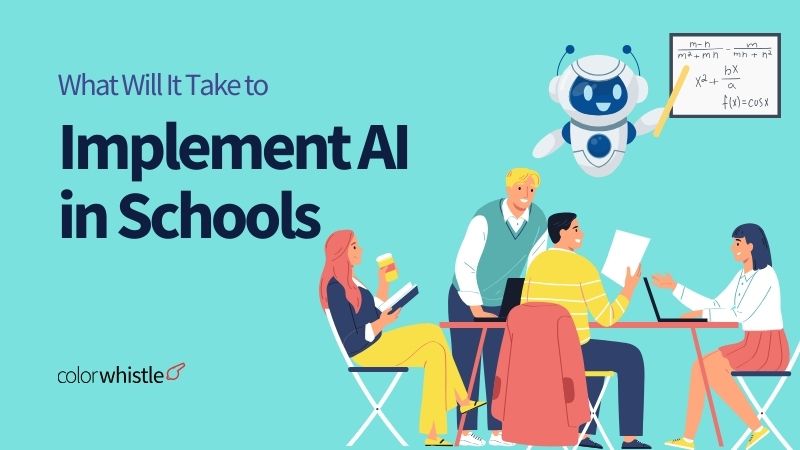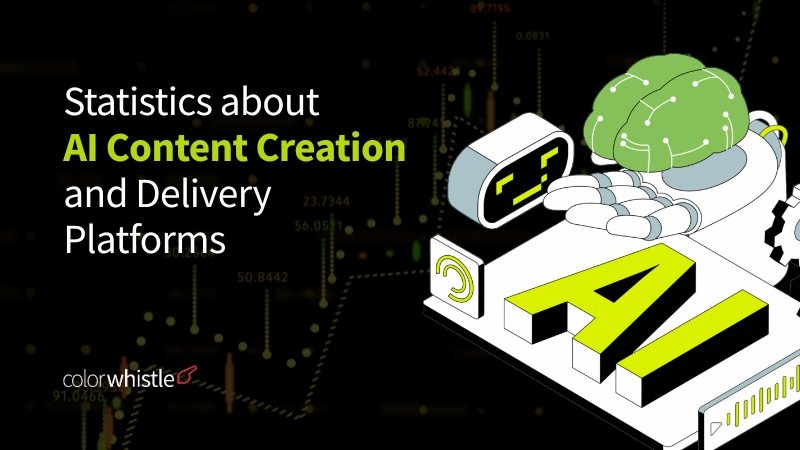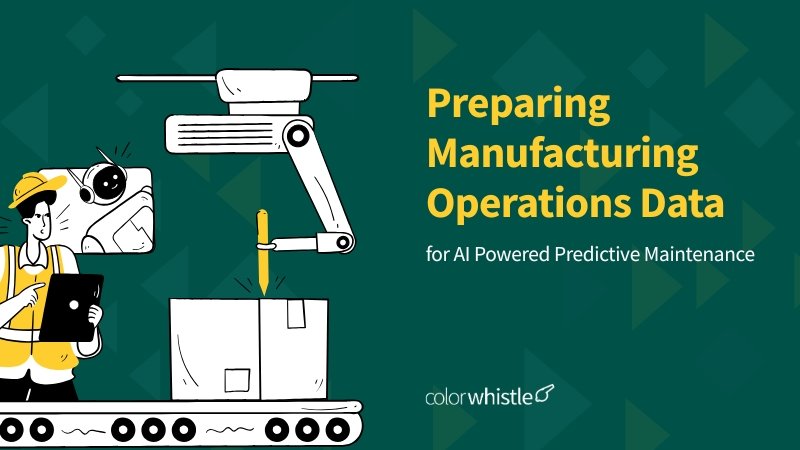Have you ever heard jokes about robots taking over the world? Well, those jokes aren’t so funny anymore because artificial intelligence, or AI, is becoming real and powerful. We encounter AI every day online, from the ads we see to the self-driving cars on the road. Even those helpful bots when we’re shopping online or AI chatbots trying to be our friends are part of it.
As an education website development services company, we see the potential of AI to revolutionize learning. AI comes in different forms, from simple automation to smart algorithms that control what we see online. There are even programs that can make videos from just words! While AI hasn’t become like the self-aware robots in movies, there are AI chatbots meant to keep us company and even AI social media stars!
In schools, AI is used for things like adaptive learning and facial recognition. But there’s a new kind of AI that can write whole essays or stories based on a simple prompt. This is raising concerns among educators because it blurs the line between original work and AI-generated content. But before R2-D2 is teaching physics, there are some hurdles to clear. Let’s explore what it will take to implement AI effectively in schools.
Are you considering implementing AI in your schools? Partner with the best AI application development service agency to turn your vision into reality.
What is AI in Education?
AI in education means using smart computer programs to improve teaching and learning. These programs can do lots of things like understanding how students learn, helping teachers with their work, giving feedback to students, and doing some boring tasks automatically. It uses fancy techniques like machine learning and understanding human language to do all these cool things!
Did you Know?
Its presence in classrooms and schools worldwide is becoming increasingly prevalent, with 92% of institutions reported to be regularly using AI technology according to a study by IDC.
Also Read
The Future of AI in Education
The future of AI in education holds promise for even greater advancements and innovations.
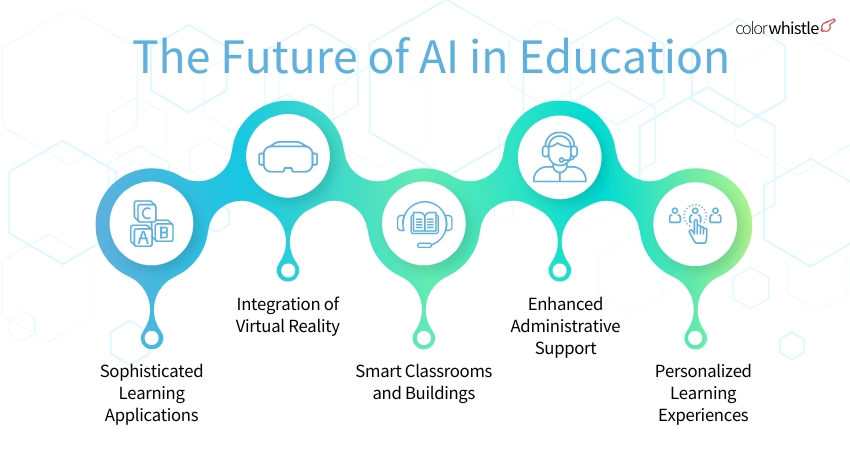
Sophisticated Learning Applications
AI applications in education will become more advanced and detailed, enabling them to analyze data effectively and provide even more personalized learning experiences for students. This heightened level of sophistication will enhance student engagement and comprehension.
Integration of Virtual Reality
Virtual reality games and software are likely to become more prevalent in classrooms, offering students immersive learning experiences. Virtual reality AI will enable students to engage in hands-on activities, such as science experiments, in a safe and interactive environment.
Smart Classrooms and Buildings
AI will be utilized to create smart classrooms and buildings, where technologies like temperature control, alarms, and lighting are managed remotely by AI-powered systems. This integration will enhance security measures and operational efficiency within educational institutions.
Enhanced Administrative Support
AI will continue to simplify administrative tasks for educators, allowing them to focus more on teaching and lesson preparation. From grading exams to streamlining paperwork, AI technologies will optimize administrative processes in schools.
Personalized Learning Experiences
AI will play a crucial role in providing personalized learning experiences for students, tailoring educational content to individual needs and preferences. This personalized approach will enhance student engagement and academic performance.
VR Classes and AI labs in schools
Virtual Reality (VR) classes and Artificial Intelligence (AI) labs in schools represent cutting-edge educational technologies that offer immersive learning experiences and personalized feedback to students. In a technical context, VR classes involve the use of head-mounted displays (HMDs) that create a simulated environment, allowing students to interact with digital content in a three-dimensional space. These VR environments are generated using advanced graphics rendering techniques and motion tracking sensors to provide a realistic and interactive experience.
On the other hand, AI labs in schools utilize machine learning algorithms and natural language processing to analyze student data and provide personalized learning pathways. AI algorithms can adapt to individual student needs by identifying learning patterns, strengths, and weaknesses. For instance, AI-powered systems can generate customized quizzes, adaptive learning modules, and real-time feedback based on student performance data.
Technical Example: Virtual Reality (VR) and Artificial Intelligence (AI) Integration
Imagine a scenario where a biology class incorporates both VR and AI technologies. In this setup, students wear VR headsets that transport them to a virtual laboratory where they can conduct experiments on virtual specimens. The AI component tracks each student’s progress, analyzes their interactions within the virtual lab, and provides personalized feedback based on their performance.
- VR Component: Students can virtually dissect a digital frog, observe cellular structures in 3D, and interact with biological processes in a simulated environment.
- AI Component: The AI system monitors each student’s actions, identifies areas of difficulty or misconceptions, and generates tailored explanations or additional practice exercises to reinforce learning.
This integration of VR and AI technologies in a biology class not only enhances student engagement and understanding but also enables educators to track student progress more effectively and provide targeted support where needed.
Key Steps to Implement AI in Schools
Implementing Artificial Intelligence (AI) in schools requires a systematic approach that encompasses infrastructure setup, professional development, data privacy considerations, stakeholder engagement, and continuous evaluation. Let’s delve into the technical aspects of each key step:
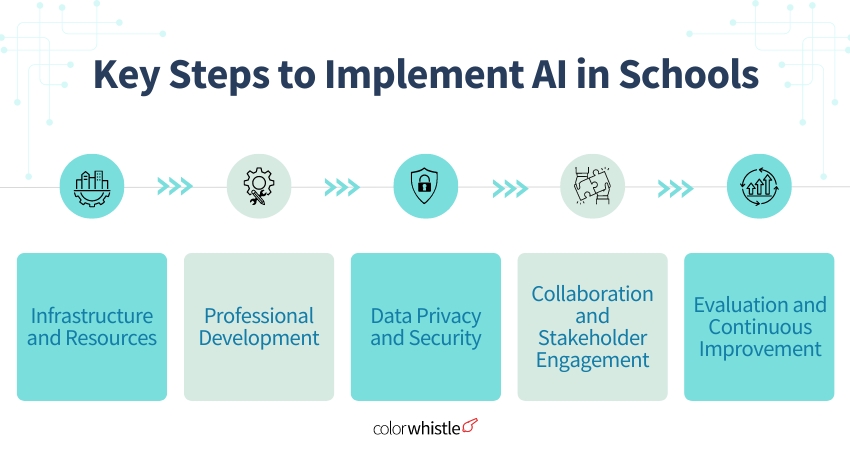
Infrastructure and Resources
- Assess Current Infrastructure: Conduct a thorough assessment of existing hardware, software, and network infrastructure to determine compatibility with AI applications
- Upgrade Hardware: Invest in high-performance computers, GPUs for accelerated processing, and cloud computing resources to support AI algorithms and applications
- Select AI Tools: Choose AI tools such as machine learning platforms, natural language processing libraries, and educational software tailored to school needs
- Implement Data Storage Solutions: Set up secure data storage systems with backup protocols to handle the large volumes of data generated by AI applications
Professional Development
- AI Training for Educators: Provide comprehensive training programs for teachers to familiarize them with AI concepts, tools, and applications relevant to educational settings
- Hands-On Workshops: Conduct hands-on workshops and simulations to enable educators to practice using AI tools for lesson planning, student assessment, and personalized learning
- Collaborative Learning Communities: Establish collaborative learning communities where educators can share best practices, troubleshoot AI implementation challenges, and exchange ideas for integrating AI into teaching practices
Data Privacy and Security
- Compliance Assessment: Conduct a compliance assessment to ensure adherence to data privacy regulations such as GDPR and COPPA
- Data Encryption: Implement encryption protocols to secure student data both in transit and at rest
- Access Control: Establish access control mechanisms to restrict data access to authorized personnel only
- Regular Audits: Conduct regular audits of data security measures and update protocols to address emerging threats and vulnerabilities
Collaboration and Stakeholder Engagement
- Stakeholder Workshops: Organize workshops involving educators, administrators, parents, and students to gather input on AI implementation goals, challenges, and expectations
- Task Forces: Form interdisciplinary task forces comprising stakeholders to oversee AI implementation, address concerns, and ensure alignment with educational objectives
- Communication Plan: Develop a communication plan to keep stakeholders informed about AI initiatives, progress, and outcomes through regular updates, newsletters, and feedback mechanisms
Evaluation and Continuous Improvement
- Performance Metrics: Define key performance indicators (KPIs) to measure the impact of AI implementation on student outcomes, teacher efficiency, and administrative processes
- Data Analysis: Utilize AI analytics tools to analyze data collected during AI implementation, identify trends, and make data-driven decisions for continuous improvement
- Feedback Loops: Establish feedback loops with stakeholders to gather insights, address issues, and refine AI strategies based on real-world experiences and user feedback
- Iterative Approach: Adopt an iterative approach to AI implementation, incorporating lessons learned from evaluations to refine AI applications, training programs, and infrastructure for sustained improvement
Also Read
The Challenges that Occur While Implementing AI in Schools Include
Limited Ease of Accessibility
In some regions, students may face limitations in accessing the necessary technology, such as smartphones, gadgets, and internet connections, which are essential for utilizing AI tools effectively
Solution
- At ColorWhistlr, we develop AI tools that function offline or with minimal internet access. Imagine downloadable educational games that utilize AI for personalized learning without a constant connection
- Our AI tools will be accessible across various devices, including laptops, tablets, and even basic smartphones. This ensures students with limited resources can still participate
Inadequate Preparedness of Teachers
Teachers need proper training to integrate AI into the educational system effectively. However, ensuring that teachers are adequately prepared and trained poses a significant challenge, especially on a global scale
Solution
- We create user-friendly, online training platforms with interactive tutorials and bite-sized learning modules to empower teachers to integrate AI seamlessly
- Our AI tools can act as virtual assistants, automating tasks like grading essays, scheduling classes, and generating personalized reports. This frees up teacher time for professional development and personalized student interaction
- We foster a global online community for teachers to share best practices, troubleshoot challenges, and collaborate on AI implementation strategies
Ethical Issues
The integration of AI in education raises ethical concerns related to data privacy, ownership, confidentiality, transparency, and ethics. Addressing these ethical considerations is crucial to ensure responsible and equitable use of AI in schools
Solution
- We implement robust data privacy protocols and encryption mechanisms within our AI tools to protect student data and ensure compliance with privacy regulations
- Our company conducts regular audits and transparency reports to demonstrate ethical standards and engage stakeholders in discussions on responsible AI usage
The inability of Students to Explore and Attain Their Full Potential
Over-reliance on AI tools can limit students’ critical thinking skills, cognitive abilities, and creativity. Students may become overly dependent on machines, hindering their ability to reach their full potential and explore their capabilities
Solution
- Our AI tools are designed to promote critical thinking, problem-solving, and creativity, enhancing student engagement and active learning
- Our platform provides guidance and support for students to develop metacognitive skills and self-regulation strategies, empowering them to manage their learning process effectively
High Cost of Implementation
The maintenance and implementation of AI technologies can be costly, leading to increased education budgets and expenditures. Countries that struggle to adapt to these innovations may face challenges in keeping up with technological advancements
Solution
- We offer scalable and cost-effective AI solutions, leveraging open-source technologies, cloud computing platforms, and flexible pricing models
- Our subscription-based plans and pay-as-you-go options accommodate varying budget constraints, ensuring affordability and accessibility for educational institutions
Facilitates Technology Addiction
The adoption of AI in education can foster technology addiction among students and teachers, shifting educational activities towards digital devices like smartphones, iPads, or laptops. This increased screen time can lead to technology dependency and potential negative impacts on traditional learning methods
Solution
- Our AI tools encourage a balanced approach to technology use, incorporating features that promote offline activities and social interaction
- We collaborate with experts to develop guidelines for healthy technology usage and provide resources for digital well-being education to mitigate technology addiction risks
Wrap-Up
Implementing AI in schools might seem like wrangling a room full of sugar-crazed toddlers, but with careful planning, a dash of humor (because seriously, who wants a robot teacher?), and the right mix of determination, innovation, and a few cups of strong coffee (or maybe some circuits and bytes for our AI friends), the possibilities are as endless as a recursive loop. Also, do not forget to team up with the right AI integration services company for a smooth AI integration process.
The challenges may seem as puzzling as debugging a rogue algorithm. Yet, with a bit of creativity and a lot of teamwork, we can turn these hurdles into stepping stones towards a brighter, AI-infused future for education.
Let’s not forget the ethical tightrope we walk, balancing data privacy concerns with the promise of AI-enhanced learning. It’s like teaching chatbot manners or convincing a neural network that sharing is caring.
Feel free to swing by our ColorWhistle page. You’ll get the lowdown on our services and find some interesting stuff there! Just head to our Contact Us page to get in touch with us.
What’s Next?
Now that you’ve had the chance to explore our blog, it’s time to take the next step and see what opportunities await!

